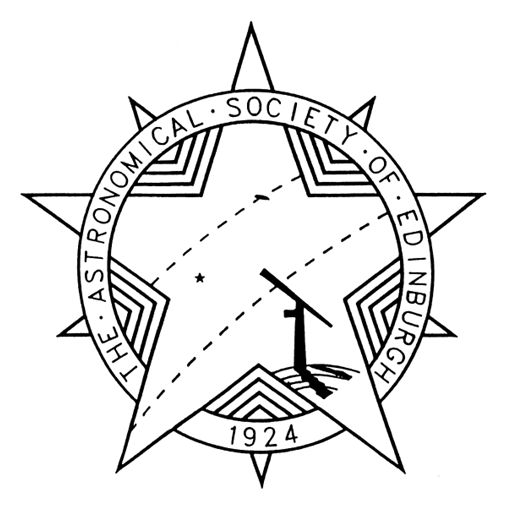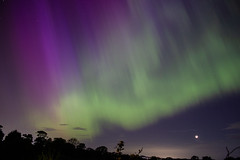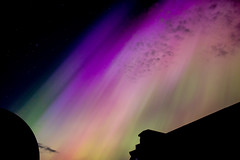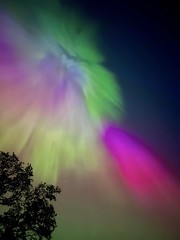Monthly Archives: March 2015
Solar Eclipse, 20th March 2015 at the Scottish Parliament

Large crowds gathered outside the Parliament to view the eclipse in largely sunny skies, with some help from ASE members. Photo credit: Rachel Thomas
We had a fantastic time at the Scottish Parliament this morning! A solar eclipse doesn’t come along all that often and it was great to share this one with members of the Society, local school children, members of staff and several hundred members of the public. My weather forecast from yesterday predicted 90% cloud cover, so I was delighted, when we set off at 7.00 am, that I had to put down the sun-visor in the car!

Various telescopes with the appropriate filters were set up to enable members of the public to safely share this fantastic experience with us. Photo credit: Rachel Thomas
I gave a talk to school-children from James Gillespie’s High School and members of staff, while Seán talked to Holyrood Primary School children. The Parliament staff were brilliant! Everything was laid on for us and they had large plasma screens set up inside streaming live images from the Faroes and the BBC’s airborne ‘observatory’, so the children missed nothing.

The public were very enthusiastic and most had solar viewers or pin hole projection systems to allow them to watch the progress of the moon throughout the eclipse. Photo credit: Alan Ellis
Meanwhile outside, our band of around 14 volunteers manned the Society’s solar telescope, 6 ‘white-light’ telescopes, binoculars and a solar projection set up. As the crowds gathered, there was great excitement as the shadow bit into the Sun. Other members of the Society arrived during the morning to lend their support and enjoy the spectacle. Some cloud blew in as the maximum approached, but it didn’t dampen spirits at all.

A very happy band of ASE members post-eclipse, glad to have shared such a special experience with so many people. Photo credit: Rachel Thomas
The Parliament put together a video record of the morning – https://www.youtube.com/watch?v=f8rNj9S2G_4 – which very nicely summed up the general feeling of excitement and enjoyment of what was a truly memorable day.
Ken Thomas
Ken is the Society’s current President and also leads the Imaging Group. He can be seen being interviewed in the video above, explaining what made this such a special experience.
Our thanks go to the Scottish Parliament for hosting this event, and for all their assistance up to and during the event. Thank you as well to all the ASE members who came along to support this event – we couldn’t do this without you!
Scotland’s Sky in March, 2015
Spectacular solar eclipse on the 20th

The maps show the sky at 23.00 GMT on the 1st, 22.00 GMT on the 16th and 21.00 GMT (22.00 BST) on the 31st. Summer time begins at 01.00 GMT on the 29th when clocks go forward one hour to 02.00 BST. (Click on map to englarge)
The two brightest planets are now well placed for viewing in our evening sky, but it is another celestial spectacle that grabs our attention during March. The solar eclipse on the 20th is visible as a deep partial eclipse across Scotland, with the morning daylight dimming noticeably as 93% or more of the Sun’s diameter is obscured by the Moon.
It is vital to stress at the outset that serious eye damage can result if we view the Sun directly through binoculars or a telescope. One safe option is to use a pair of inexpensive eclipse glasses. Another is to use a pinhole or one side of a pair of binoculars to project the Sun’s image onto a white card. It is also possible to buy “astro solar safety film” that covers the objective (Sun-facing) side of your binoculars or telescope to drastically reduce the Sun’s light and heat to an acceptable level.
For Edinburgh, where 94% of the Sun’s diameter is obscured, this is the deepest eclipse since 29 June 1927 when 98% of the Sun was covered. We must wait until 23 September 2090 for the next deeper one at 95%.
Travel north and westwards from Edinburgh and the obscuration becomes even greater. Specifically, Dumfries sees 93% obscuration, Glasgow and Aberdeen, like Edinburgh, have 94%, while Inverness has 96% and Kirkwall, Lerwick and Stornoway enjoy 97%. London, for comparison, has 87%. Further afield, a partial eclipse is visible as far south as northern Africa and eastwards to Mongolia.
If we continue onwards another 240km from Scotland into the northern Atlantic we reach the edge of the path across the Earth’s surface from which the eclipse is total. That path, up to 487km wide, begins to the south of Greenland and curves north-eastwards to cross the Faroe Islands and Svalbard and end at the North Pole where the Sun sits on the horizon.
Only from within this path of totality will the Sun’s dazzling surface, its photosphere, be completely hidden, and its tenuous outer atmosphere, the corona, spring into view; sadly, we will not see the corona from Scotland. Totality lasts for up to 2 minutes 47 seconds from the centre of the path, but for only about 2 minutes from the Faroe Islands which lie away from the centre.
For Edinburgh, the eclipse begins at 08:30 on the 20th as the Moon’s disk begins to encroach from the Sun’s right hand side. just above the 3 o’clock position. Mid-eclipse occurs at 09:35 when the Sun appears as a slender sickle with its horns pointing upwards. The event ends when the Moon’s disk leaves the Sun’s left limb at 10:43. These times vary a little, becoming later as you go north and eastwards; for Lerwick, for example, they are some eight minutes later.
At mid-eclipse as seen from Edinburgh, the Sun stands 25° high in the south-east. Given a clear sky, it may well be possible to spot the planet Venus as it stands 34° to the left of the Sun and 5° lower in the sky.
The eclipse occurs only 13 hours before the Sun crosses northwards over the equator at 22:45 on that day, the moment of the vernal equinox.
Sunrise/sunset times for Edinburgh vary from 07:05/17:46 GMT on the 1st to 06:57/19:48 BST (05:47/18:48 GMT) on the 31st, after we set our clocks forward to British Summer Time on the 29th. Full moon on the 5th is followed by last quarter on the 13th, new moon (and the eclipse) on the 20th and first quarter on the 27th.
Venus, dazzling and unmistakable at magnitude -3.9 to -4.0, stands in our western sky at nightfall and sinks to set more than three hours after the Sun. Telescopically, it swells from 12 to 14 arcseconds and its gibbous phase changes from 86% to 78% sunlit. Mars, much fainter at magnitude 1.3 and a mere 4 arcseconds wide, lies 3.5° below-right of Venus on the 1st but their separation increases to 17° by the month’s end as Mars drops lower into the twilight.
Orion stands in the south at nightfall at present, but is sinking into the west by our star map times as the conspicuous planet Jupiter climbs from the east at nightfall to dominate our southern sky. Edging westwards in Cancer a few degrees to the east of the Praesepe star cluster (use binoculars), it lies above-left of the Moon on the 2nd and again on the 29th. Although Jupiter dims slightly from magnitude -2.5 to -2.3 as its diameter shrinks from 44 to 42 arcseconds, it remains the target of choice for telescope-users while binoculars show the changing positions of the four main moons.
Mercury lies much too low in our morning twilight to be glimpsed from Scotland. Saturn, though, is the brightest object low in the south before dawn. Rising in the south-east in the early hours, it climbs to pass 15° high on Edinburgh’s meridian at 05:51 on the 1st and two hours earlier by the month’s end.
Moving hardly at all against the stars, Saturn is less than 2° above and left of the double star Graffias in Scorpius and 8° above-right of the distinctive red supergiant Antares. The latter pulsates a little near magnitude 1.0 and is noticeably fainter than the planet which improves from magnitude 0.5 to 0.3. Viewed telescopically, its disk is 17 arcseconds wide and the rings are 39 arcseconds wide with their north face tipped 25° towards us. Catch Saturn 2° below and left of the Moon on the 12th.
Alan Pickup



